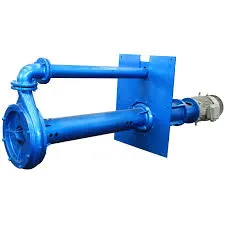Sinhala
- Afrikaans
- Albanian
- Amharic
- Arabic
- Armenian
- Azerbaijani
- Basque
- Belarusian
- Bengali
- Bosnian
- Bulgarian
- Catalan
- Cebuano
- Corsican
- Croatian
- Czech
- Danish
- Dutch
- English
- Esperanto
- Estonian
- Finnish
- French
- Frisian
- Galician
- Georgian
- German
- Greek
- Gujarati
- Haitian Creole
- hausa
- hawaiian
- Hebrew
- Hindi
- Miao
- Hungarian
- Icelandic
- igbo
- Indonesian
- irish
- Italian
- Japanese
- Javanese
- Kannada
- kazakh
- Khmer
- Rwandese
- Korean
- Kurdish
- Kyrgyz
- Lao
- Latin
- Latvian
- Lithuanian
- Luxembourgish
- Macedonian
- Malgashi
- Malay
- Malayalam
- Maltese
- Maori
- Marathi
- Mongolian
- Myanmar
- Nepali
- Norwegian
- Norwegian
- Occitan
- Pashto
- Persian
- Polish
- Portuguese
- Punjabi
- Romanian
- Russian
- Samoan
- Scottish Gaelic
- Serbian
- Sesotho
- Shona
- Sindhi
- Sinhala
- Slovak
- Slovenian
- Somali
- Spanish
- Sundanese
- Swahili
- Swedish
- Tagalog
- Tajik
- Tamil
- Tatar
- Telugu
- Thai
- Turkish
- Turkmen
- Ukrainian
- Urdu
- Uighur
- Uzbek
- Vietnamese
- Welsh
- Bantu
- Yiddish
- Yoruba
- Zulu
Telephone: +86 13120555503
Email: frank@cypump.com
දෙසැ. . 12, 2024 11:02 Back to list
high pressure slurry pumps
High Pressure Slurry Pumps Essential Equipment for Challenging Operations
In various industrial applications, the movement of slurry—mixtures of liquids and solids—poses unique challenges. Slurry often contains abrasive particles, which can cause significant wear on standard pumping equipment. To effectively handle these challenging conditions, high-pressure slurry pumps have emerged as vital components in numerous sectors, including mining, construction, and wastewater management.
What are High Pressure Slurry Pumps?
High-pressure slurry pumps are specially designed to transport mixtures of solids and liquids at elevated pressures. Unlike standard pumps, these units are engineered to handle the abrasive and corrosive nature of slurries, making them suitable for transporting materials such as coal, ash, and various mineral ores. The design incorporates robust materials and advanced features to ensure longevity and reliability under extreme conditions.
Key Features
1. Durable Construction High-pressure slurry pumps are typically made from heavy-duty materials like hard metal alloys or rubber linings. These materials resist abrasion and corrosion, extending the life of the pump even in harsh environments.
2. High Efficiency These pumps are designed to minimize hydraulic losses, ensuring energy efficiency. The optimized design of the impellers and casing enhances flow and reduces operational costs, which is crucial for industries where margins are tight.
3. Versatile Applications High-pressure slurry pumps are used across a spectrum of industries, including mining, where they transport ore slurries; in construction, for transporting concrete mixtures; and in environmental applications, such as handling sludges and slurries in wastewater treatment plants.
4. Customizable Options Many manufacturers offer customizable solutions to meet specific operational needs. This includes different sizes, materials, and configurations, allowing businesses to adapt the equipment for their unique challenges.
high pressure slurry pumps

Operational Challenges
Despite their robust design, high-pressure slurry pumps encounter several operational challenges. One primary issue is the increased wear caused by abrasive materials. Regular maintenance and timely component replacement are essential to prevent downtime and expensive repairs. Additionally, proper installation and operation are crucial to maintain efficiency and longevity. Inadequate support or misalignment can lead to premature failure.
Importance of Maintenance
Maintaining high-pressure slurry pumps is critical to ensuring their reliability and efficiency. Operators should implement regular inspection schedules to check for wear and tear and ensure that all components are functioning correctly. This includes monitoring the seals, bearings, and impellers for signs of damage or fatigue. Additionally, keeping the pump clean and free from blockages is essential for optimal performance.
Future Trends
As industries continue to innovate, the development of high-pressure slurry pumps is also advancing. Current trends include the integration of smart technologies, such as IoT sensors, that provide real-time monitoring. These technologies enable predictive maintenance, reducing unplanned downtime and improving overall operational efficiency. Furthermore, the push for sustainable practices is driving manufacturers to design pumps that consume less energy and reduce environmental impact.
Conclusion
High-pressure slurry pumps play an indispensable role in industries that require the movement of challenging, abrasive materials. Their specialized design, durable construction, and ability to handle high pressures make them ideal for various applications. However, ensuring their optimal performance requires diligent maintenance and the adoption of new technologies. As industrial processes evolve, the continued refinement of these pumps will be crucial to meeting the demands of modern operations. Investing in high-quality, reliable slurry pumps not only enhances productivity but also supports sustainability goals in the long run.
-
Heavy-Duty Mining Sludge Pumps - Wear-Resistant Slurry Handling
NewsAug.02,2025
-
Horizontal Split Case Pump with GPT-4 Turbo | High Efficiency
NewsAug.01,2025
-
ISG Series Pipeline Pump - Chi Yuan Pumps | High Efficiency, Durable Design
NewsAug.01,2025
-
Advanced Flue Gas Desulfurization Pump with GPT-4 Turbo | Durable & Efficient
NewsJul.31,2025
-
ISG Series Vertical Pipeline Pump - Chi Yuan Pumps | Advanced Hydraulic Design&Durable Construction
NewsJul.31,2025
-
ISG Series Vertical Pipeline Pump - Chi Yuan Pumps | Energy Efficient & Low Noise
NewsJul.31,2025










